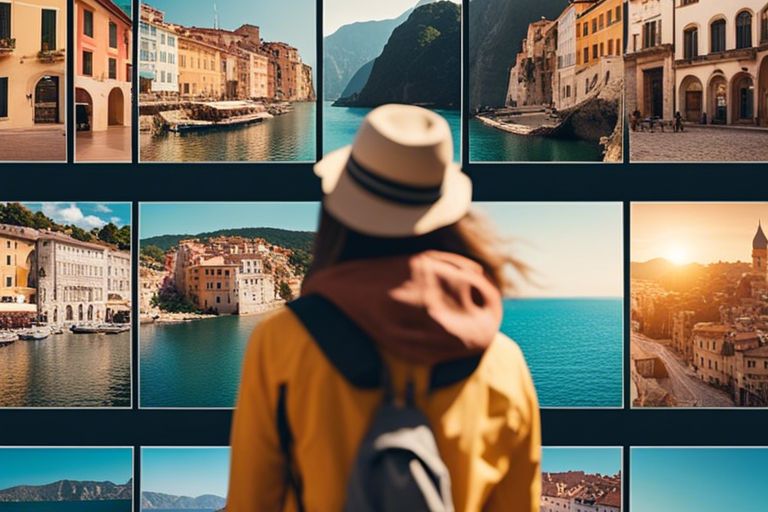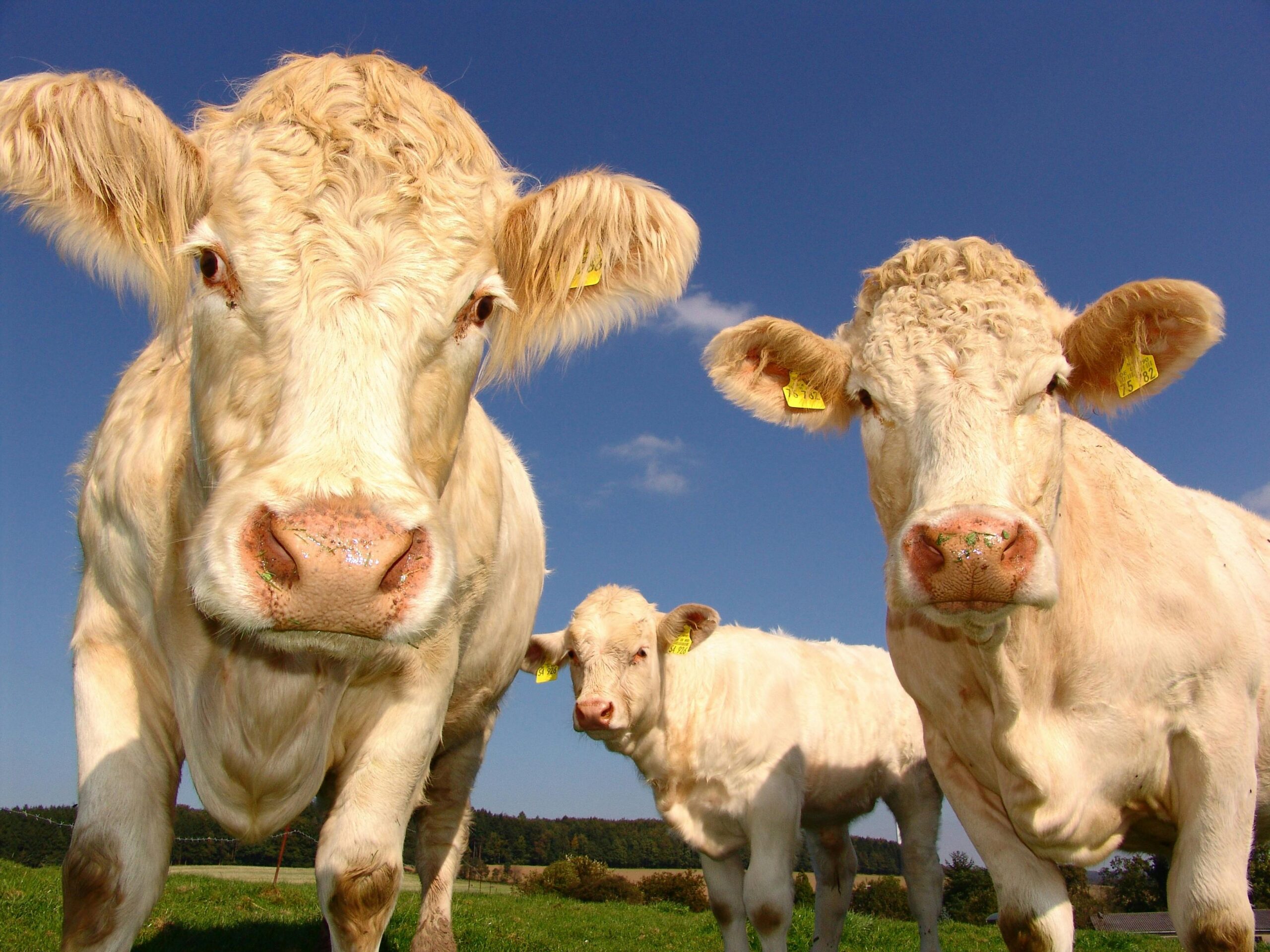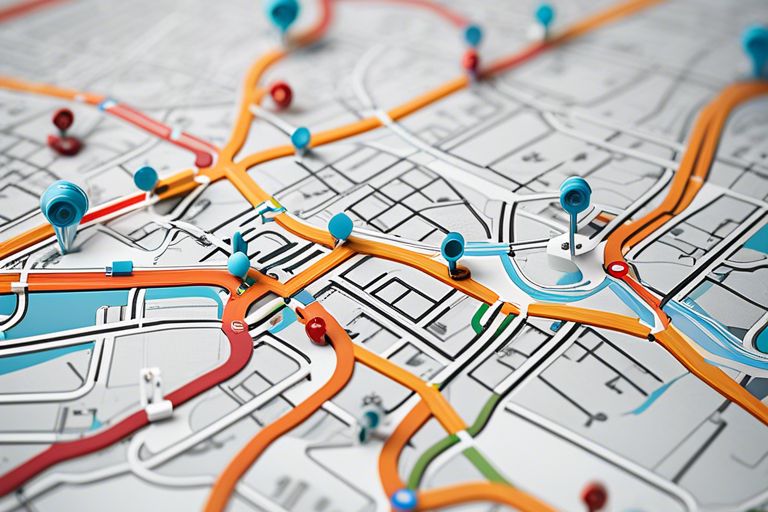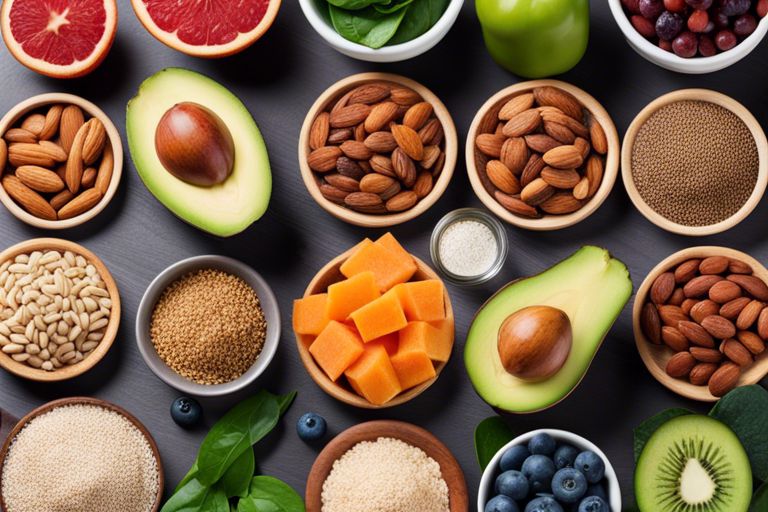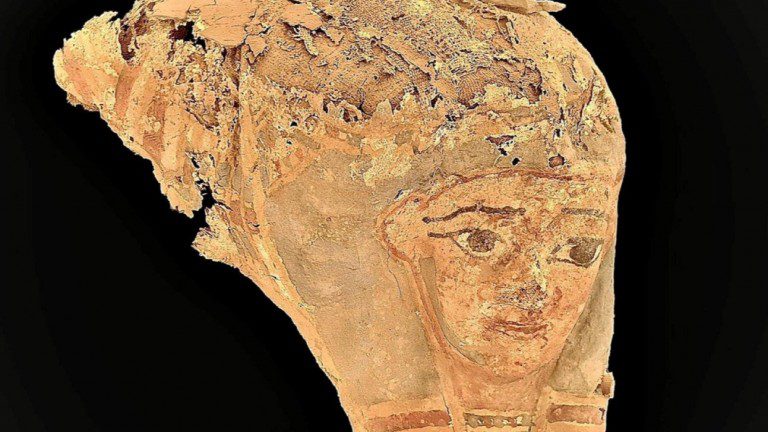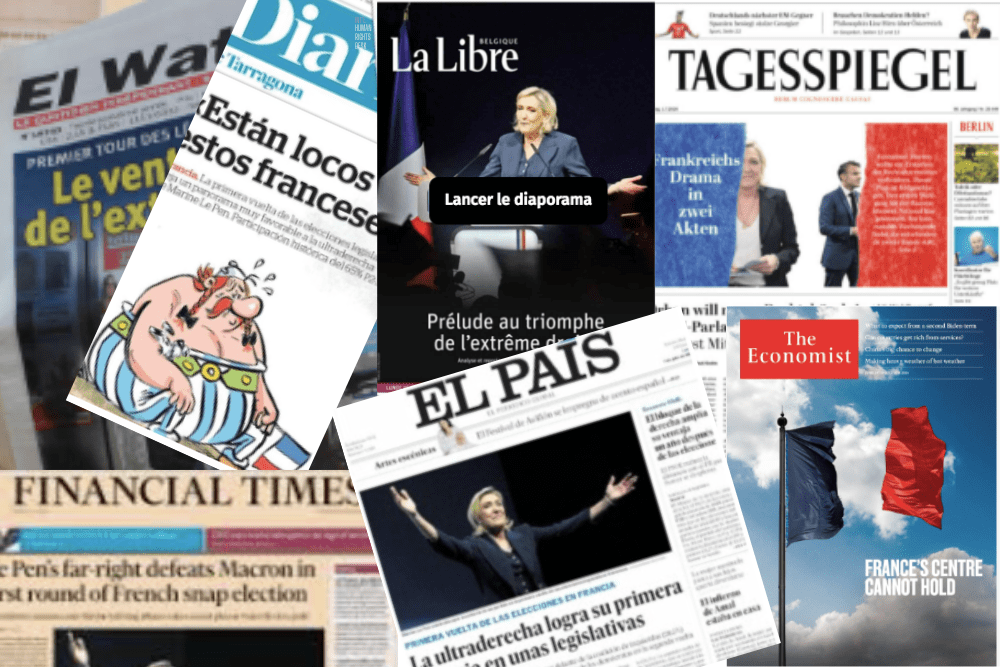Nutrition is key to fueling your body for optimal performance and recovery during your workouts. What you eat before and after exercise can make a significant difference in your energy levels, muscle recovery, and overall results. In this comprehensive guide, you will learn the important nutrition tips to maximize your pre and post-workout meals, helping you achieve your fitness goals effectively.
1. Pre-workout: Eat carbs and protein 1-2 hours before.
2. Stay hydrated by drinking water before and after your workout.
3. Avoid heavy, high-fat meals that can slow digestion.
4. During workout, consider a sports drink for hydration and energy.
5. Post-workout: Refuel with protein for muscle repair and growth.
6. Include carbs to replenish glycogen stores for energy recovery.
Understanding the Importance of Pre-Workout Nutrition
While you may focus on what you eat after a workout, what you consume before your exercise routine is just as crucial. Pre-workout nutrition plays a vital role in providing you with the energy and nutrients needed to perform at your best during your workout session. It helps to fuel your muscles and optimize your performance while also aiding in muscle recovery post-exercise.
Factors Affecting Pre-Workout Nutrition
Even before you decide on what to eat before a workout, there are various factors you need to consider that can influence your pre-workout nutrition choices. These factors include your fitness goals, the intensity and duration of your workout, any dietary restrictions, and your personal preferences.
- Timing: When and how soon you eat before a workout
- Macronutrient balance: The ratio of carbs, protein, and fat in your pre-workout meal
- Food choices: Selecting the right type of foods that are easily digestible and provide sustained energy
- Hydration: Ensuring you are well-hydrated before starting your workout
After addressing these factors, you can tailor your pre-workout nutrition to suit your individual needs and optimize your performance.
Pros and Cons of Different Pre-Workout Meal Timings
| Meal Timing | Pros and Cons |
| 1-2 hours before | Pro: Provides sustained energy throughout the workout Con: May not be suitable for early morning workouts |
| 30 minutes before | Pro: Quick energy boost Con: May lead to indigestion or discomfort during the workout |
| Intermittent fasting | Pro: Can promote fat loss Con: May result in decreased performance for some individuals |
Pre-workout nutrition meal timings can significantly impact your exercise performance. Choose the timing that works best for you based on your schedule, preferences, and how your body responds to the meal.
Types of Pre-Workout Nutrition
One of the crucial aspects of your workout routine is your pre-workout nutrition. The right macronutrient-rich foods, meal replacement shakes and supplements, and snacks and beverages can make a significant difference in your performance at the gym.
Macronutrient-Rich Foods
Little adjustments in your pre-workout nutrition can lead to big improvements in your training sessions. Protein-rich foods like chicken, eggs, and Greek yogurt can help build and repair muscle tissue. Carbohydrate-rich foods such as fruits, oats, and sweet potatoes provide the necessary energy for your workouts. Healthy fats from sources like nuts and avocados can help sustain your energy levels throughout your session.
| Protein | Chicken, Eggs, Greek Yogurt |
| Carbohydrates | Fruits, Oats, Sweet Potatoes |
| Healthy Fats | Nuts, Avocados |
Meal Replacement Shakes and Supplements
Replacement options like meal replacement shakes and protein bars can be convenient and effective sources of nutrition before your workout. These products are designed to provide a balance of macronutrients tailored to support your exercise performance and recovery.
This comprehensive approach ensures you get the imperative nutrients your body needs to enhance your workout results. Remember to choose products that are low in added sugars and artificial ingredients for optimal performance.
Snacks and Beverages for Optimal Energy
Foods rich in fast-digesting carbohydrates like bananas and granola bars can give you a quick energy boost before your workout. Hydration is also crucial, so be sure to include water, coconut water, or sports drinks in your pre-workout routine to stay hydrated and energized.
PreWorkout, focusing on whole foods and natural sources of energy will provide you with a sustained release of nutrients during your training session, helping you perform at your best.
The Ultimate Guide To Pre And Post-Workout Nutrition: Step-by-Step Guide to Pre-Workout Meal Planning
To ensure you are fueling your body properly before a workout, it’s important to plan your pre-workout meals carefully. Below is a step-by-step guide to help you create the perfect pre-workout meal plan tailored to your fitness goals and needs.
Calculating Your Caloric Needs
| If you are looking to optimize your performance during a workout, it’s crucial to determine your caloric needs based on your activity level and fitness goals. | Caloric Needs Calculator – Use an online calculator to estimate how many calories you need per day based on your age, weight, height, and activity level. This will give you a starting point for planning your pre-workout meals. |
Choosing the Right Foods for Your Workout Type
| PreWorkout you engage in strength training, focusing on protein-rich foods like chicken, eggs, or Greek yogurt can help support muscle growth and repair. | Cardio Workouts – Opt for complex carbohydrates like oats, sweet potatoes, or whole grains to provide long-lasting energy for your cardio sessions. |
StepbyStep understanding your workout type will help you select the right foods that can enhance your performance and help you achieve your fitness goals more effectively.
Sample Meal Plans for Different Fitness Goals
There’s no one-size-fits-all approach to pre-workout nutrition, as it varies depending on your fitness goals. Whether you aim to build muscle, increase endurance, or lose weight, there are specific meal plans to support each goal.
Meal prepping can be a game-changer in ensuring you have the right nutrients at the right time to fuel your workouts and optimize your performance. By following these sample meal plans tailored to your fitness goals, you can take your workouts to the next level and see results faster.
Tips for Optimizing Pre-Workout Digestion
For optimal performance during your workouts, it’s crucial to pay attention to your pre-workout nutrition and how it affects your digestion. Here are some tips to help you optimize your pre-workout digestion:
- Aim to eat a balanced meal 1-2 hours before your workout, focusing on complex carbohydrates, lean proteins, and healthy fats to provide sustained energy.
- Avoid foods high in saturated fats and simple sugars right before your workout, as they can lead to digestive discomfort and sluggishness.
- Stay hydrated by drinking water before and during your workout to aid in digestion and help regulate your body temperature.
Any discomfort during your workout can greatly impact your performance, so paying attention to your pre-workout digestion is crucial for a successful exercise session.
Managing Food Intolerances and Sensitivities
Clearly, if you have known food intolerances or sensitivities, it’s important to avoid those foods before your workout to prevent digestive issues. Pay attention to how your body reacts to certain foods and adjust your pre-workout meals accordingly. Additionally, consider incorporating digestive enzymes or probiotic supplements to aid in digestion and reduce any discomfort.
Strategies for Reducing Bloating and Discomfort
To optimize your pre-workout digestion and minimize bloating and discomfort, try eating smaller meals closer to your workout time. Additionally, focus on easily digestible foods such as smoothies or rice cakes with nut butter. Avoid foods high in fiber or artificial sweeteners that can cause gastrointestinal distress.
Optimizing your pre-workout digestion is crucial for fueling your body properly and enhancing your performance during exercise. By following these tips and paying attention to how your body responds, you can ensure a comfortable and energized workout session.
The Role of Probiotics in Gut Health
To support your gut health and improve digestion, consider incorporating probiotic-rich foods such as yogurt, kefir, and sauerkraut into your diet. Probiotics help maintain a healthy balance of gut bacteria, which is crucial for optimal digestion and nutrient absorption. Plus, they can help reduce bloating, gas, and other digestive issues.
Plus, if you are looking to supplement with probiotics, choose a high-quality product that contains a variety of strains and a high CFU count to maximize the benefits for your digestive system.
Post-Workout Nutrition: Why It Matters
After an intense workout, taking care of your body is crucial for maximizing your efforts in the gym. **Post-workout nutrition** plays a significant role in helping your muscles recover, replenishing energy stores, and ensuring optimal results from your training sessions. If you’re looking for a comprehensive guide on pre and post-workout nutrition, check out The Ultimate Guide to Pre- and Post-Workout Nutrition for more in-depth information.
The Anabolic Window: Separating Fact from Fiction
Window **The idea of an “anabolic window” immediately after your workout when you must consume protein or carbohydrates within a specific timeframe to maximize muscle growth has been debated in recent years. While it is true that getting nutrients into your body after a workout can be beneficial, the concept of a narrow window is not as critical as once thought. **Your body is constantly repairing and rebuilding muscle tissue, so as long as you’re consuming **nutrient-dense foods** throughout the day, you will still see improvements in your muscle recovery and growth. The key is to focus on **consistency** in your nutrition rather than stressing about consuming nutrients within a precise time frame.
The Importance of Refueling for Muscle Recovery
Even **after your workout, your muscles are depleted of glycogen and need proper nutrition to kickstart the recovery process. **Refueling with a combination of **protein and carbohydrates** is vital to repair muscle tissue, replenish energy stores, and help your body bounce back stronger for your next training session. **Post-workout nutrition is your opportunity to provide your body with the necessary building blocks to repair and grow muscle, ultimately improving your performance and results in the long run.
Nutrition plays a crucial role in helping you achieve your fitness goals. By **prioritizing post-workout nutrition**, you can enhance your recovery, boost muscle growth, and improve your overall performance in the gym. Remember to focus on **whole, nutrient-dense foods** to give your body the fuel it needs to thrive. **Consistency is key**, so make sure to **refuel after every workout** to optimize your results and progress towards your fitness ambitions.
Types of Post-Workout Nutrition
Many different types of post-workout nutrition can help you recover and refuel after a challenging workout. It’s important to give your body the right nutrients to optimize recovery and performance. Here are some key types of post-workout nutrition to consider:
- Protein-Rich Foods and Supplements
- Carbohydrate-Rich Foods for Glycogen Replenishment
- Healthy Fats for Hormone Regulation and Inflammation Reduction
- Supplements for Enhanced Recovery
- Hydration for Replenishing Fluids
| Protein-Rich Foods and Supplements | Carbohydrate-Rich Foods for Glycogen Replenishment |
| Chicken breast | Sweet potatoes |
| Salmon | Quinoa |
| Whey protein powder | Whole grain bread |
| Greek yogurt | Bananas |
| Beans | Berries |
Protein-Rich Foods and Supplements
Protein-rich foods and supplements are important for muscle repair and growth after your workout. Consuming protein post-exercise helps stimulate muscle protein synthesis and aids in recovery. Foods like chicken breast, salmon, and Greek yogurt are excellent sources of protein. If you’re looking for a convenient option, whey protein powder can be easily added to your post-workout smoothie or shake.
Carbohydrate-Rich Foods for Glycogen Replenishment
Carbohydrates are crucial for replenishing glycogen stores in your muscles after a workout. Consuming carbohydrates post-exercise helps restore energy levels and promote recovery. Foods like sweet potatoes, quinoa, and whole grain bread are good sources of carbohydrates. Including fruits like bananas and berries in your post-workout meal can also provide a quick source of energy.
The consumption of carbohydrates post-workout is important to replenish glycogen stores that were depleted during your exercise session. Carbohydrates help restore energy levels, so you can recover faster and be ready for your next workout. Including a mix of complex carbohydrates like whole grains and simple sugars from fruits can provide the right balance for replenishing glycogen effectively.
Healthy Fats for Hormone Regulation and Inflammation Reduction
Healthy fats play a crucial role in hormone regulation and reducing inflammation in your body post-exercise. Including sources of healthy fats like avocado, nuts, and olive oil in your post-workout meal can help support hormone production and reduce exercise-induced inflammation. These fats are important for overall health and can aid in your recovery process.
The consumption of healthy fats post-workout is important for hormone balance and reducing inflammation, which can help optimize your recovery and performance. Including a variety of healthy fats in your post-workout nutrition plan can provide important nutrients and support your overall well-being.
Supplements
Supplements can be a valuable addition to your post-workout nutrition regimen, providing targeted support for enhanced recovery. Options like protein powders, branched-chain amino acids (BCAAs), and creatine can help support muscle repair, reduce muscle soreness, and improve performance. While supplements can be beneficial, it’s important to choose high-quality products and consult with a healthcare provider or nutritionist to ensure they are suitable for your needs.
Factors Influencing Post-Workout Nutrition Needs
Keep in mind that your post-workout nutrition needs can vary based on several factors. Understanding these factors can help you optimize your recovery and performance. Here are some key considerations:
- Workout Intensity and Duration: Some workouts may be more demanding than others, requiring different levels of nutrient replenishment. For example, a high-intensity workout like sprinting may deplete your glycogen stores more rapidly than a moderate-intensity weightlifting session.
- Individual Nutrient Requirements and Deficiencies: Post-workout nutrition needs can also be influenced by your unique nutrient requirements and any deficiencies you may have. Addressing specific nutrient needs in your post-workout meals can support recovery and help prevent further deficiencies.
Workout Intensity and Duration
Some workouts place a higher demand on your body and deplete your energy stores more quickly. If you engage in high-intensity or long-duration activities, your post-workout nutrition should focus on replenishing glycogen stores and supporting muscle recovery. The timing and composition of your post-workout meal or snack can impact how well you recover and adapt to your training.
Individual Nutrient Requirements and Deficiencies
PostWorkout nutrition needs can be influenced by your unique nutrient requirements and any deficiencies you may have. For example, if you are deficient in vitamin D, incorporating foods rich in this nutrient post-exercise can help support your overall health and recovery. Identifying and addressing individual nutrient needs can optimize your post-workout nutrition strategy.
Age, Sex, and Body Composition
If you are younger or older, male or female, your post-workout nutrition needs may vary. Age-related factors such as metabolism and hormone levels can impact how your body responds to exercise and nutrient intake. Plus, differences in body composition, such as muscle mass and fat percentage, can influence your nutrient requirements for optimal recovery and performance.
Step-by-Step Guide to Post-Workout Meal Planning
Now, let’s probe the step-by-step process of planning your post-workout meals to maximize recovery and results. Here, we will discuss creating a balanced meal for optimal recovery, sample meal plans for different fitness goals, and timing and frequency of post-workout meals.
Creating a Balanced Meal for Optimal Recovery
Optimal recovery after a workout is crucial for muscle growth and replenishing energy stores. When planning your post-workout meal, aim to include a combination of protein and carbohydrates. Protein helps repair and build muscle, while carbohydrates replenish glycogen stores and provide energy. Additionally, adding some healthy fats can aid in nutrient absorption and support overall health.
Incorporate foods like lean meats, poultry, fish, eggs, quinoa, sweet potatoes, fruits, and vegetables into your post-workout meal. A balanced meal that includes these components will help optimize your recovery and provide the necessary nutrients for your body to repair and grow.
Sample Meal Plans for Different Fitness Goals
An effective post-workout meal plan will vary depending on your fitness goals. If you are looking to build muscle, consider a meal that combines protein and carbohydrates in a 2:1 ratio. For fat loss, focus on lean protein sources and incorporate more vegetables into your meal to keep you full and satisfied. If your goal is endurance training, include complex carbohydrates and a moderate amount of protein to replenish energy stores.
Meal planning for your specific fitness goals is necessary to support your body’s needs and help you reach your desired outcomes. Tailoring your post-workout meals to your goals will ensure that you are fueling your body effectively for optimal performance and results.
Timing and Frequency of Post-Workout Meals
There’s a common belief that you need to consume protein immediately after your workout to maximize recovery. While PostWorkout nutrition is important, the timing of your post-workout meal is not as critical as once believed. As long as you consume a balanced meal containing protein and carbohydrates within a few hours after your workout, you can still effectively support recovery and muscle growth. Remember to listen to your body and eat when you are hungry to fuel your recovery properly.
Tips for Optimizing Post-Workout Recovery
Not paying attention to your post-workout recovery can hinder your progress and leave you feeling sore and fatigued. To ensure your body recovers effectively after a workout, it’s crucial to focus on proper nutrition, hydration, and rest.
- Strategies for Reducing Muscle Soreness and Inflammation
Strategies for Reducing Muscle Soreness and Inflammation
One of the key strategies for reducing muscle soreness and inflammation after a workout is to incorporate stretching and foam rolling into your cool-down routine. This can help increase blood flow and reduce muscle tension, promoting faster recovery. Additionally, adding foods rich in anti-inflammatory properties like turmeric and omega-3 fatty acids can also help alleviate soreness.
Assume that incorporating these strategies into your post-workout routine can help minimize muscle soreness and enhance your overall recovery process.
- The Role of Antioxidants and Anti-Inflammatory Compounds
The Role of Antioxidants and Anti-Inflammatory Compounds
Compounds found in antioxidant-rich foods such as berries, dark leafy greens, and nuts can help combat oxidative stress in the body and reduce inflammation caused by intense exercise. Including these nutrient-dense foods in your post-workout meals can support your body’s repair and recovery process.
Reducing inflammation post-workout can boost your immune system and promote better overall performance in your next training session.
- Importance of Hydration and Electrolyte Balance
Importance of Hydration and Electrolyte Balance
Hydration plays a crucial role in maintaining your body’s temperature and helping with the transport of nutrients to your cells. Electrolytes, such as sodium and potassium, are crucial for muscle function and proper hydration. Ensuring you replenish both fluids and electrolytes post-workout is crucial for efficient recovery and performance.
Tips: Keep a reusable water bottle with you throughout the day to ensure you’re staying hydrated and consuming enough fluids to support your recovery.
Common Mistakes to Avoid in Pre- and Post-Workout Nutrition
Over- or Under-Eating Before a Workout
Unlike what you might think, more isn’t always better when it comes to pre-workout nutrition. **Overeating** before a workout can leave you feeling sluggish and bloated, making it harder to perform at your best. On the other hand, **under-eating** can leave you feeling weak and fatigued, with not enough energy to power through your session.
Neglecting Proper Hydration and Electrolyte Balance
Even with the best pre- and post-workout nutrition plan, if you neglect proper **hydration** and **electrolyte balance**, you’re setting yourself up for subpar performance and recovery. **Dehydration** can lead to decreased strength, endurance, and overall workout performance. Furthermore, an imbalance in electrolytes like sodium and potassium can cause muscle cramps, fatigue, and even dizziness during your session.
Common signs of dehydration include dark urine, dry mouth, and feeling thirsty. It’s important to drink enough water throughout the day and especially before, during, and after your workout to ensure optimal performance and recovery.
Failing to Adjust Nutrition Plans Based on Progress
Based on your progress in the gym, it’s crucial to **adjust** your **nutrition** plan accordingly. **Failing to do so** can hinder your performance and results. For example, if you’re consistently feeling fatigued during workouts or not seeing improvements in strength or muscle growth, it may be a sign that you need to tweak your pre- and post-workout nutrition strategy.
For instance, if you’re looking to build muscle but not seeing progress, you may need to increase your **protein** intake to support muscle repair and growth. On the other hand, if you’re feeling sluggish during workouts, adding more **carbohydrates** before your session could provide the energy boost you need.
Special Considerations for Specific Diets and Restrictions
Once again, if you are following a specific diet or have dietary restrictions, it’s vital to tailor your pre and post-workout nutrition accordingly. For a comprehensive guide on how to optimize your nutrition around your workouts, check out A Guide to Pre- and Post-Workout Nutrition.
Vegetarian and Vegan Pre- and Post-Workout Nutrition
Vegan: If you follow a vegan diet, you can still meet your pre and post-workout nutrition needs by incorporating plant-based sources of protein, such as beans, lentils, tofu, tempeh, and quinoa. Supplementing with pea protein or rice protein powders can also help you reach your protein goals. For carbohydrates, focus on fruits, vegetables, whole grains, and legumes. Don’t forget healthy fats from sources like nuts, seeds, avocados, and plant-based oils to support overall health and recovery.
Gluten-Free and Low-FODMAP Options
You: If you are gluten-free or following a low-FODMAP diet, there are plenty of options to fuel your workouts effectively. Opt for gluten-free grains like rice, quinoa, and oats, and be mindful of low-FODMAP fruits and vegetables such as bananas, blueberries, carrots, and spinach. Additionally, sources of protein like chicken, turkey, eggs, and lactose-free dairy can support muscle recovery without triggering digestive issues.
LowFODMAP: The Low-FODMAP diet focuses on reducing fermentable carbohydrates that can exacerbate digestive symptoms. By choosing low-FODMAP options like lactose-free dairy, certain fruits and vegetables, and gluten-free grains, you can support your workout performance while minimizing discomfort. Experiment with different foods to find what works best for your body and consult with a registered dietitian for personalized guidance.
Nutrition Planning for Athletes with Food Allergies
The: If you have food allergies, careful nutrition planning is crucial to ensure you meet your dietary needs while avoiding potential allergens. Planning your meals and snacks ahead of time can help you stay on track and prevent accidental exposure to allergens. Always read labels carefully, communicate your allergies to food establishments, and consider working with a healthcare provider or dietitian to create a safe and effective nutrition plan tailored to your specific allergies.
Supplements and Ergogenic Aids: Do They Really Work?
Your quest for the best pre and post-workout nutrition may lead you to consider the use of various supplements and ergogenic aids. But do they really work? Let’s explore some common options and their effectiveness in enhancing your performance and recovery.
Protein Powders and Creatine Supplements
Really, protein powders and creatine supplements are popular choices among athletes and fitness enthusiasts looking to boost muscle growth and strength. Protein powders can be a convenient way to increase your protein intake, aiding in muscle repair and recovery. Creatine supplements may improve your high-intensity exercise performance and promote lean muscle mass gains. When used correctly and in combination with a balanced diet, these supplements can be beneficial additions to your workout routine.
Beta-Alanine and Branched-Chain Amino Acids (BCAAs)
Little is known about beta-alanine and BCAAs. **Beta-alanine** is believed to enhance muscular endurance by increasing carnosine levels in your muscles. **BCAAs**, consisting of leucine, isoleucine, and valine, are crucial for muscle protein synthesis and reducing muscle fatigue during exercise. Incorporating these supplements into your pre and post-workout nutrition strategy may help improve your overall performance and recovery.
Ergogenic aids, such as beta-alanine and BCAAs, have been shown to have positive effects on athletic performance and muscle recovery. Beta-alanine can increase exercise capacity and performance during high-intensity activities, while BCAAs are crucial for muscle growth and repair. Including these supplements in your regimen may give you an added edge in achieving your fitness goals.
The Science Behind Popular Pre- and Post-Workout Supplements
Amino acid supplements, such as beta-alanine and BCAAs, have garnered attention for their potential to enhance exercise performance and recovery. **It** is important to note that individual responses to these supplements may vary, and it’s crucial to consult with a healthcare professional before incorporating them into your routine. By understanding the science behind these popular pre and post-workout supplements, you can make informed choices to optimize your training outcomes.
Putting it All Together: Creating a Personalized Nutrition Plan
Despite the abundance of information available on pre and post-workout nutrition, creating a personalized plan can still be challenging. To make the process easier, consider the following steps to tailor your nutrition to your workout needs.
Assessing Your Current Diet and Nutrition Habits
Putting together a personalized nutrition plan starts with assessing your current diet and nutrition habits. Take some time to reflect on what you are currently eating before and after your workouts. Are you fueling your body adequately for exercise? Are you eating the right balance of nutrients for recovery?
Setting Realistic Goals and Tracking Progress
An important aspect of creating a personalized nutrition plan is setting realistic goals and tracking your progress. By setting specific, measurable goals, you can better monitor your progress and make adjustments as needed. Whether your goal is to improve performance, build muscle, or lose weight, having a clear target can help keep you motivated and on track.
Additionally, tracking your progress allows you to see what is working well and what may need adjustment in your nutrition plan. Keep a food and workout journal to record your meals, snacks, exercise routines, and how you feel during and after workouts. This information can help you identify patterns and make informed decisions about your nutrition and fitness goals.
Adjusting Your Plan Based on Feedback and Results
Results from tracking your progress will provide valuable feedback on the effectiveness of your nutrition plan. If you are not seeing the results you desire, it may be time to adjust your plan. This could involve changing your macronutrient ratios, meal timing, or types of foods you consume. Keep in mind, everyone’s body is different, so what works for one person may not work for another.
By staying flexible and open to making changes based on feedback and results, you can continually optimize your nutrition plan to support your fitness goals. Don’t be afraid to experiment and try new approaches until you find what works best for you.
Conclusion
Drawing together the key points of ‘The Ultimate Guide To Pre And Post-Workout Nutrition’, you now have a comprehensive understanding of how to fuel your body properly before and after exercise. By following the tips and suggestions outlined in this guide, you can optimize your performance, enhance your recovery, and achieve your fitness goals more effectively. For further in-depth information, you can refer to The Complete Pre and Post-Workout Nutrition Guide.




